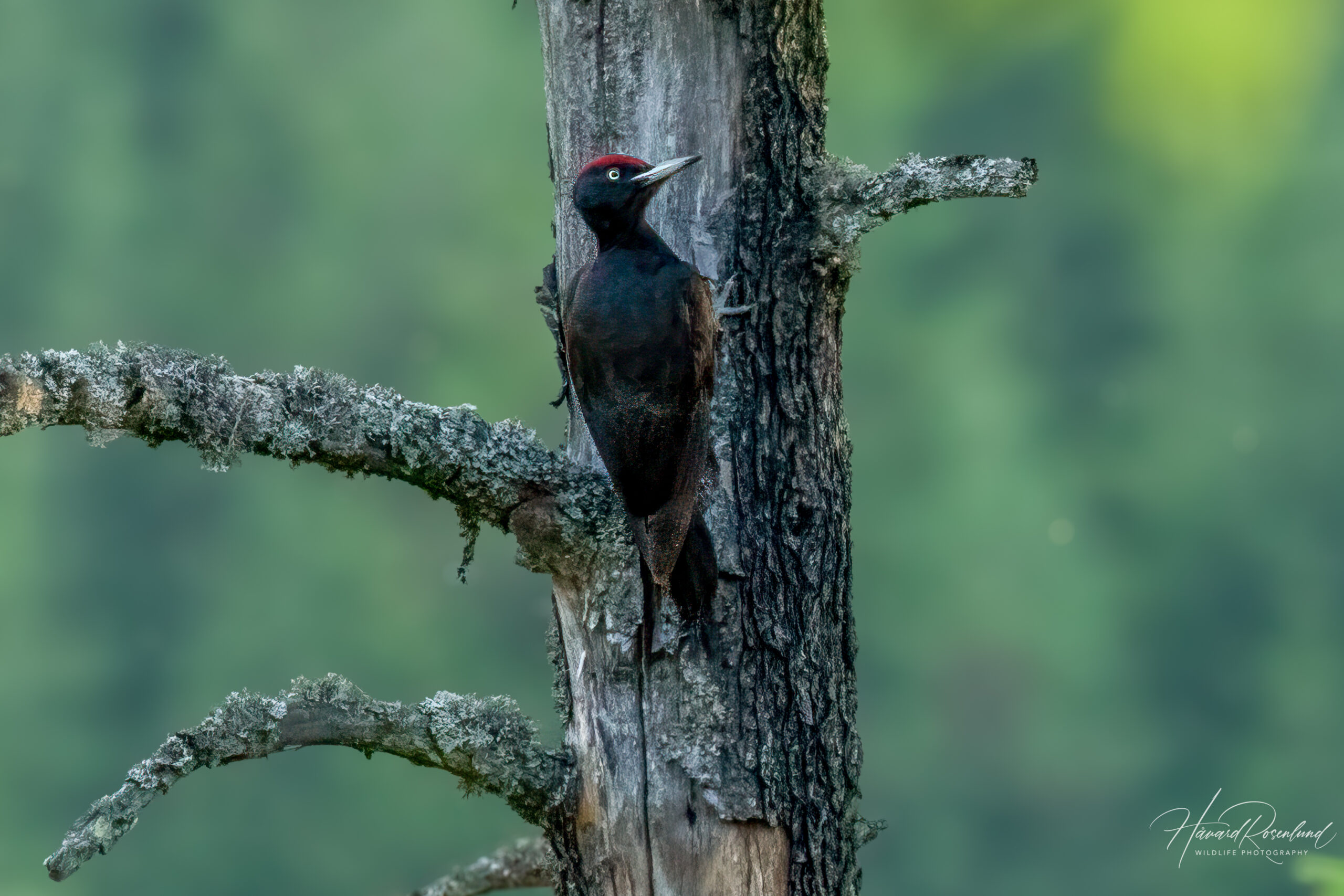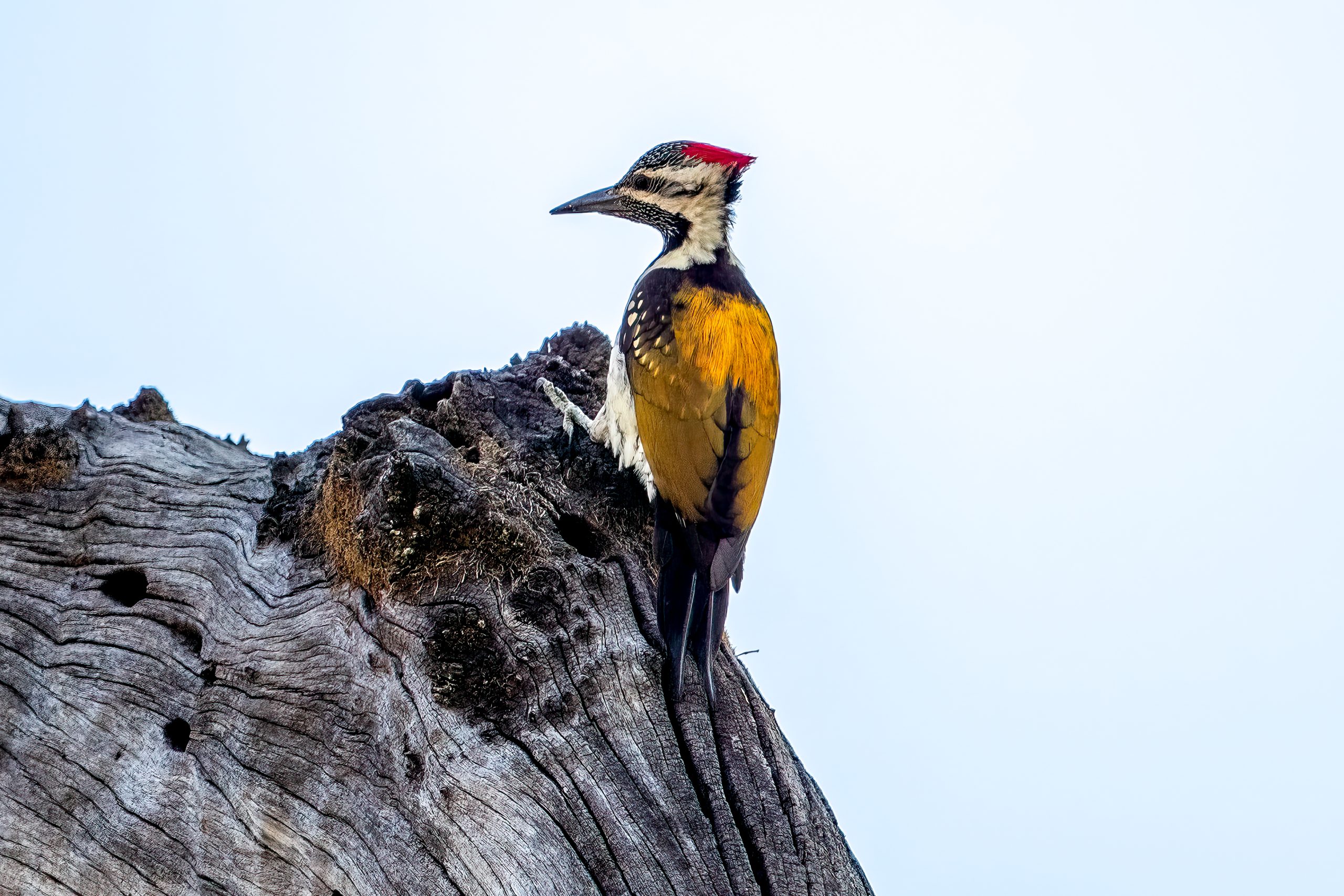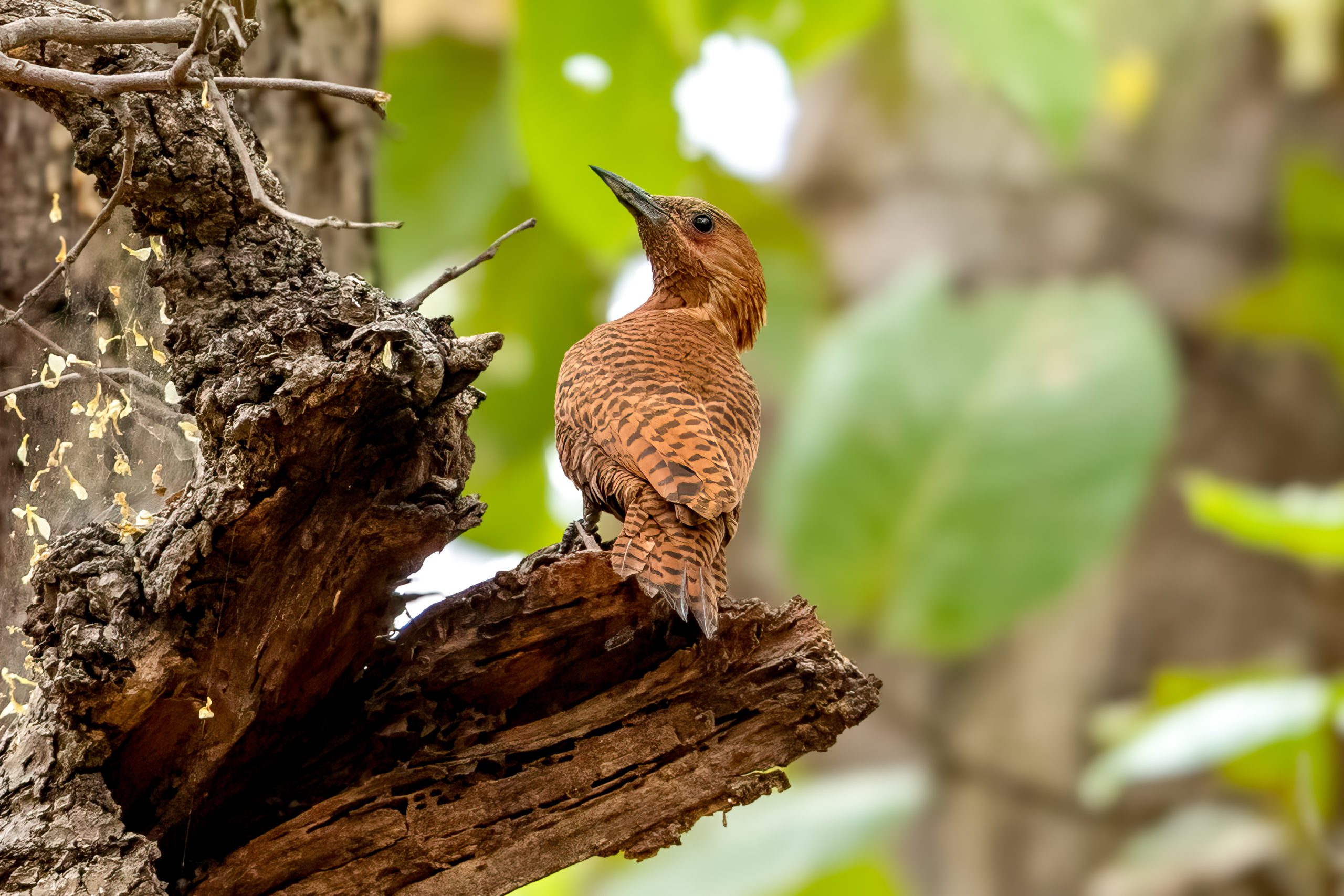Description
The black woodpecker (Dryocopus martius) is a large species of woodpecker with a range that spans across much of temperate Eurasia. It is distinguished by its striking black plumage and red crown. Males boast a completely red crown, while females have a red base only on the back of the head. This species reaches lengths of 45-55 cm (17.7-21.6 in) and a wingspan of 64-84 cm (25.2-33.1 in), making it the largest woodpecker in Europe and temperate Asia. The black woodpecker plays a crucial role in its ecosystem as a keystone species, creating nesting cavities that are subsequently used by a variety of other birds and mammals.
Diet & habitat
Black woodpeckers are found in mature forests, showing a preference for deciduous and mixed forests with a high incidence of old and decaying trees. Their diet is versatile, feeding primarily on ants and their larvae dug out from under the bark of trees, but they also consume other insects, tree sap, and occasionally fruit. Their powerful bills allow them to excavate deep into the wood to access food sources, and they are known to create large, rectangular holes in trees during this process.
Behavior
Notably solitary outside of the breeding season, the black woodpecker is territorial, and its loud, distinct calls can be heard over long distances, used to communicate and establish territories. They are adept flyers, with a distinctive undulating flight pattern. These woodpeckers are also known for their loud drumming, a rapid tapping on tree trunks with their beaks to establish territory and attract mates.
Nesting
Breeding season begins in late winter to early spring. Black woodpeckers are monogamous and often return to the same nesting site yearly. They nest in large cavities they excavate in trees, laying 3-5 eggs per clutch. Both parents share incubation duties over a period of about 12-14 days, and the fledging period lasts approximately 3-4 weeks. During this time, both parents feed the young, primarily with ants.
Status
The black woodpecker is currently listed as least concern on the IUCN Red List, benefiting from a large population, wide range, and its adaptability to various forested environments. However, habitat destruction and forestry practices that remove old and decaying trees can impact local populations.






